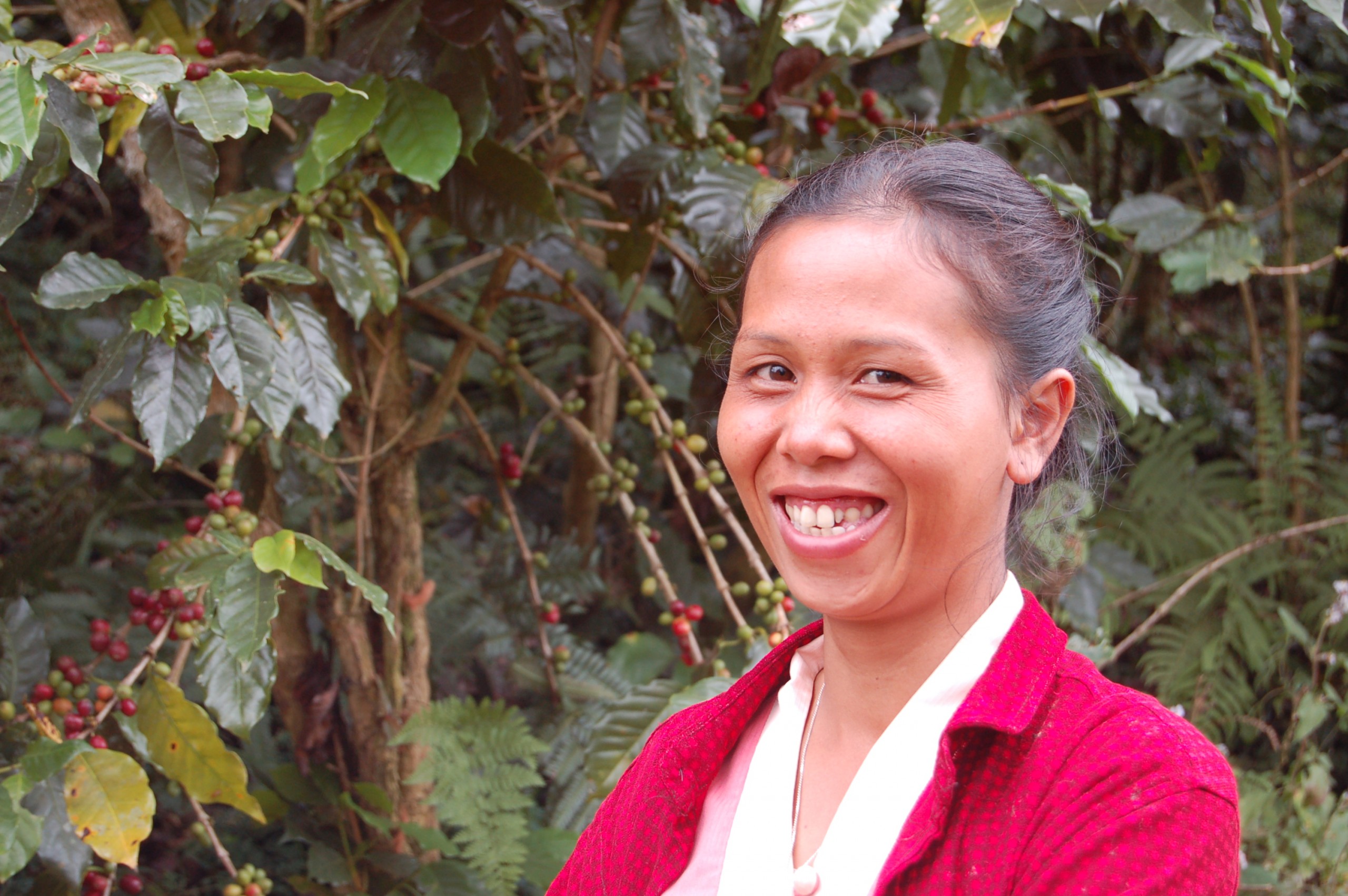Enhancing coffee production and processing to attain stronger bargaining power in trading coffee
In Sekong province in southern Laos, minority ethnic communities have been growing coffee for decades. However, limited productivity and poor quality of their product is constraining the potential to secure an income they can live on. This is further hindered by the highly competitive and fluctuating global market of this commodity. Traditionally, the villagers have sold the red berries right after picking them from the plants. The value of such raw product, without further processing (e.g. parchment, green beans processing and roasting) nor quality grading – further constrained by remoteness and limited access to market – inevitably generated only minimal income. CARE in Lao PDR is currently supporting remote ethnic communities and particularly women in the district of Dak Cheung to access higher markets and increase their income, by improving women-led production skills (coffee cultivation), by enhancing their knowledge and technology to process the coffee and by linking them with higher value national and global traders.
Moving beyond cultivation
The new infrastructure for the coffee processing has just been built on the outskirts of Dakvor village, which is surrounded by coffee plantations. The aim is to advance the production from the simple selling of red berries towards processing of coffee parchment.
Ms. Silinta is 29-year-old and she is one of the leading women embracing the introduction of new technologies for coffee processing. Together with her family, she has been cultivating coffee for almost a decade. Besides rice, coffee is the most popular cash crop to grow in Dakvor a village in the remote South of Lao PDR.
“It means a lot to me and my family that the new equipment is installed. Now we can start earning more, than by just selling red berries. We can keep the processed coffee parchment for longer time, so that we don’t have to rush in selling to the first buyer”says Silinta.
Sorting out (grading) the berries is the first of many steps in the coffee processing. Once the low quality berries have been removed, the better ones are processed by removing their outer pulp. This turns the red berries into parchment.
Since Silinta and her family started growing coffee, they have only sold the red berries. For her the improved processing is new, but she already learned how to use it by spending about one week practicing the processing at a Coffee Producers Cooperative (about four hours away from the village), jointly with other women from neighbouring villages.
Meanwhile, the new equipment, that easily turns berries into coffee parchment, has just been built on time before the start of this harvesting season (normally between November to February).

“As soon as the equipment is installed, we are ready to start using it so that we can sell our product with higher profit, than what we earned from the red berries”
The fact that parchment has a higher value than the red berries is not a novelty for the villagers. They simply couldn’t afford to invest in the equipment and the construction of the processing centre, which includes a tank for rinsing and grading the red berries, the pulping machine, an additional tank for parchment fermentation, a washing canal, a drying sector, the warehouse, a water tank, an electric system, the waste drainage and the overall control scheme.
“Before I had to go to another village to use their manual and old equipment for pulping and then I kept the parchment outside of my house for drying. It was very hard and time consuming for me to carry the loads back and forth between the two villages”
In addition to the constrained access to required technology, the cold and very humid climate in Dakvor, causes serious challenges in drying the coffee. The moisture content being one of the crucial quality standards when selling the parchment, a proper drying facility is crucial for the processing. With the simple drying facility provided, the producers are able to reduce the moisture content below 12% as required by the traders. This was hardly possible before.
Although this year the price of coffee on the international market has drastically dropped, the added value of the processing is expected to generate a tenfold increase of the income for Silinta and her family. Depending on the quantity she will be able to produce, the earning should at least range between USD. 1,000 – 2,000.
Most importantly, this also results from the transition of an uncertain system of individual daily pick up and sales of red berries, towards a formal model of women-led organization around quality parchment processing with collective sales.


